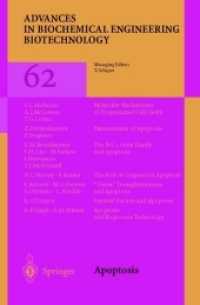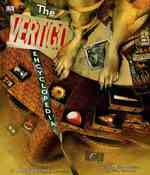Full Description
Rooted in examples from their own and others' classrooms, the authors offer discipline-specific practices for implementing antiracist literature instruction in White-dominant schools. Each chapter explores a key dimension of antiracist literature teaching and learning, including designing literature-based units that emphasize racial literacy, selecting literature that highlights voices of color, analyzing Whiteness in canonical literature, examining texts through a critical race lens, managing challenges of race talk, and designing formative assessments for racial literacy and identity growth.Book Features:
Specific classroom scenarios and transcripts of race-related challenges that teachers will recognize to help situate suggested strategies
Sample racial literacy objectives, questions, and assessments to guide unit instruction.
A literature-based unit that addresses societal racism in A Raisin in the Sun.
Assignments for exploring Whiteness in the teaching of The Adventures of Huckleberry Finn.
Questions teachers can use to examine To Kill a Mockingbird through a critical race lens.
Techniques for managing difficult moments in whole group discussions.
Collaborative glossary and exploratory essay assignments to build understanding of race-based concepts and racial identity development.
Contents
Foreword Timothy J. Lensmire
Acknowledgments
1. Teaching About Racism Through Literature in White Schools
Why Focus on White Educational Contexts?
Why Teach About Racism Via Literary Study?
What Is a Critical Race Approach and Why Take It Up?
Notes on Authorial Decisions Throughout the Book
2. Designing Racial Literacy Objectives and Assessments for Literature-Based Units
Common Challenge: Glossing Over Complex Race Concepts
Why This Matters from a Critical Race Perspective
What You Can Do: Use Backward Planning to Design Literature-Based Units for Racial Literacy
In the Classroom: Articulating Racial Literacy Objectives for A Raisin in the Sun
Conclusion
3. Introducing a Racialized Reader Response
Common Challenge: White Readers' Misreadings of Blackness in Literature
Why This Matters from a Critical Race Perspective
What You Can Do: Interrupt Whiteness Via Text Selection and Literary Response
In the Classroom: Racializing White Readers' Responses to The Crossover
Conclusion
4. Unearthing Whiteness in Canonical Texts about Racism
Common Challenge: White Investments in Canonic White Savior Narratives
Why This Matters from a Critical Race Perspective
What You Can Do: Expose Whiteness in Canonic, White-Authored Texts
In the Classroom: Exposing Whiteness in Adventures of Huckleberry Finn
Conclusion
5. Applying a Critical Race Theory Lens for Literary Analysis
Common Challenge: Reinforcing Racism via Traditional Literary Analysis
Why This Matters from a Critical Race Perspective
What You Can Do: Employ a CRT Lens for Literary Analysis
In the Classroom: Applying a CRT Lens to To Kill a Mockingbird
Conclusion
6. Planning for and Responding to Race Talk
Common Challenge: Managing Race Talk
Why It Matters from a Critical Race Perspective
What You Can Do: Use Proactive and Reactive Strategies for Managing Race Talk
Conclusion
7. Designing Assignments to Build Racial Literacy
Common Challenge: Questioning White Racial Assumptions
Why This Matters from a Critical Race Perspective
What You Can Do: Design Assignments to Scaffold Racial Literacy
In the Classroom: Using Collaborative Glossaries and Exploratory Essays
Racial Identity Work for White Teachers
A Beginning, Not an End
References
Index
About the Author








